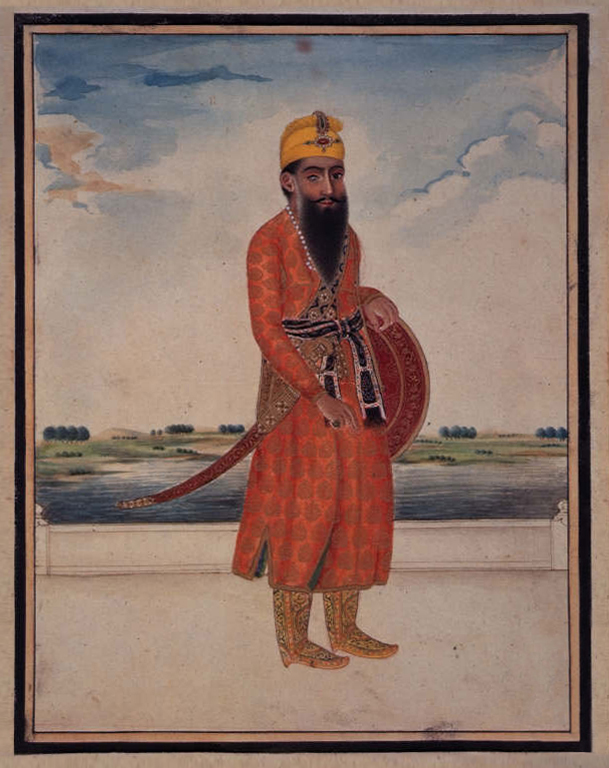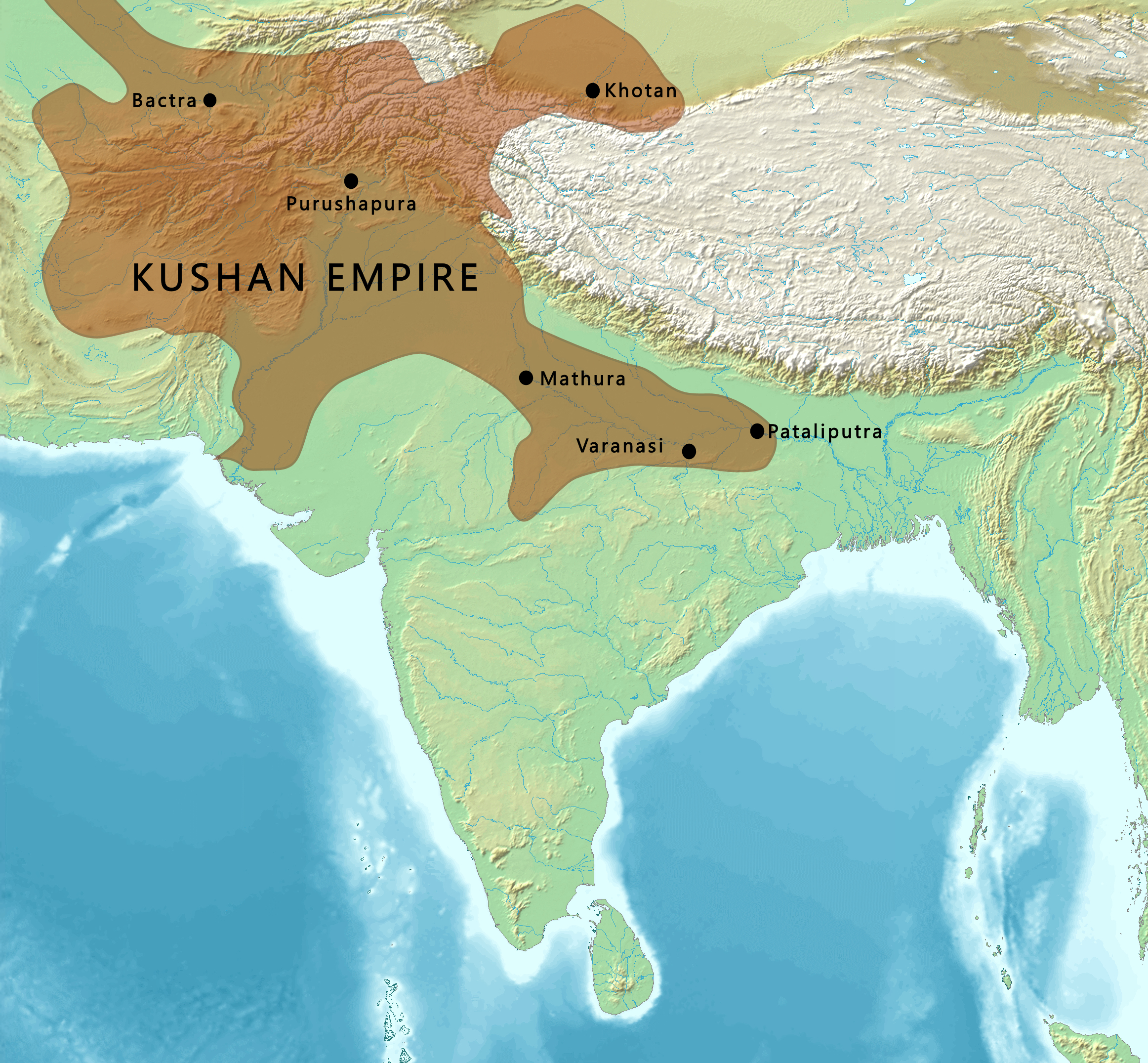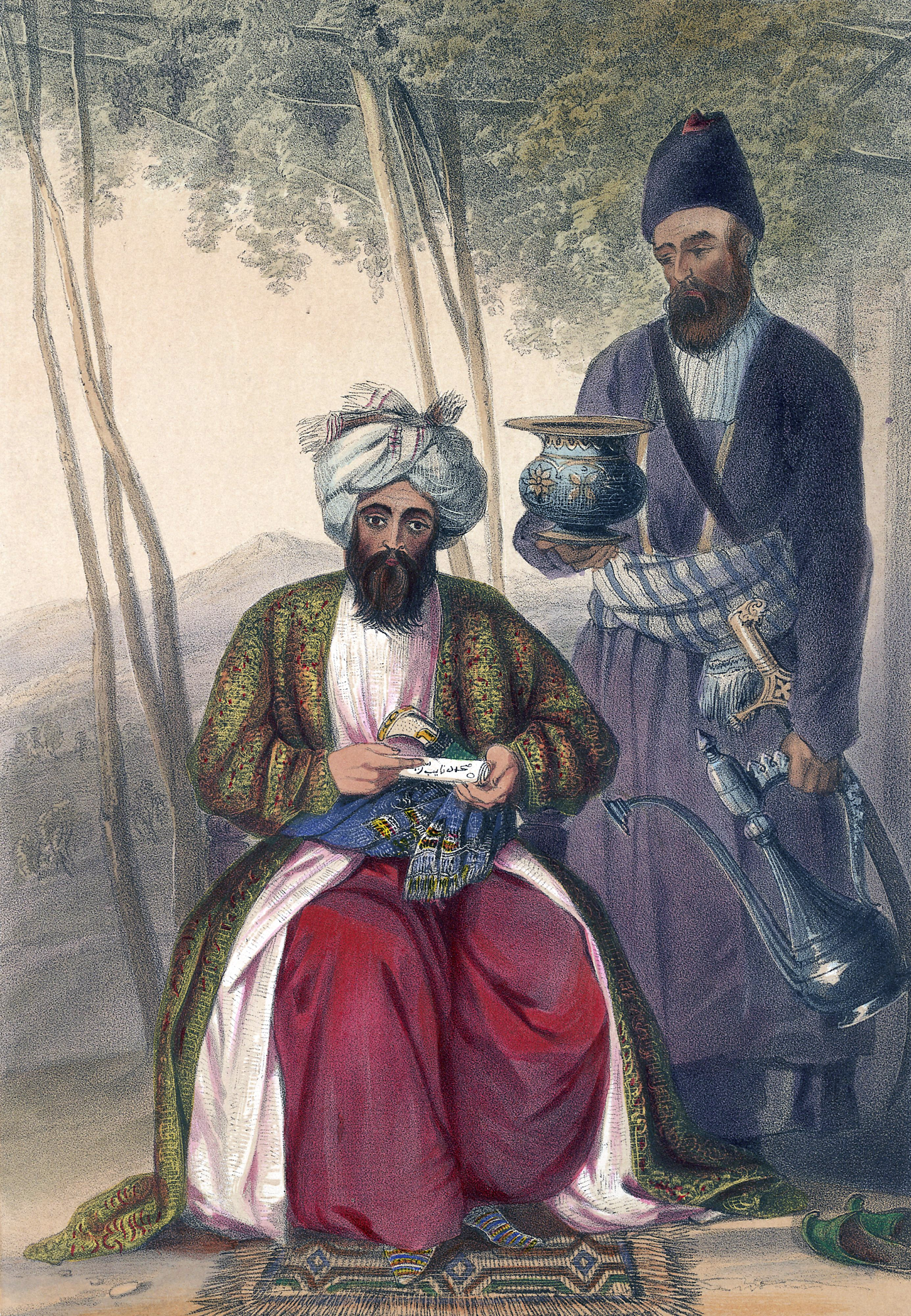|
Torture And Execution Of Fateh Khan Barakzai
Fateh Khan Barakzai or Wazir Fateh Khan or simply, Fateh Khan, was Wazir of the Durrani Empire during the reign of Mahmud Shah Durrani until his torture and execution at the hands of Kamran Shah Durrani, the son of the ruler of the Durrani Empire, and Mahmud Shah Durrani, and other prominent conspirators such as Ata Mohammad Khan. Fateh Khan was of the Barakzai tribe, and his death led to his tribe revolting and the eventual deposition of Mahmud Shah Durrani. Early life Rise to Power (1800–1801) Zaman Shah Durrani ushered through an era of prosperity that the Durrani Empire had not seen for a while. However all was not good, with the Barakzais chiefs who planned to topple Zaman Shah; they had laid the constituent articles that Zaman Shah should be overthrown and replaced by his brother, Sujah Mirza, the Durrani crown should be elective, with the chiefs confirming the next rulers, and also that the kings who have been proven unworthy can be deposed by the chiefs. Wafadar Kh ... [...More Info...] [...Related Items...] OR: [Wikipedia] [Google] [Baidu] |
Vizier
A vizier (; ; ) is a high-ranking political advisor or Minister (government), minister in the Near East. The Abbasids, Abbasid caliphs gave the title ''wazir'' to a minister formerly called ''katib'' (secretary), who was at first merely a helper but afterwards became the representative and successor of the ''dapir'' (official scribe or secretary) of the Sasanian Empire, Sassanian kings. In modern usage, the term has been used for government Minister (government), ministers in much of the Middle East and beyond. Several alternative spellings are used in English, such as ''vizir'', ''wazir'', and ''vezir''. Etymology Vizier may be derived from the Arabic ''wazara'' (), from the Semitic root ''W-Z-R''. The word is mentioned in the Quran, where Aaron is described as the ''wazir'' (helper) of Moses, as well as the word ''wizr'' (burden) which is also derived from the same root. It was later adopted as a title, in the form of ''wazīr āl Muḥammad'' () by the proto-Shi'a leaders ... [...More Info...] [...Related Items...] OR: [Wikipedia] [Google] [Baidu] |
Kamran Shah Durrani
Kamran Mirza Durrani (Pashto/Persian: کامران میرزا دورانی) was the last Durrani ruler of Herat from 1826 to 1842. He was the son and successor of Mahmud Shah Durrani (). During Kamran Mirza's early life, a lengthy struggle for control of the capital Kabul occurred between his father and his father's half-brother, Shah Shujah Durrani (). In this period, Kamran Mirza governed the city of Kandahar, while his uncle Firuz al-Din Mirza ruled Herat under Iranian suzerainty. When Firuz al-Din rebelled in 1814, Kamran Mirza suppressed the revolt. In 1818, the Durrani minister Fateh Khan Barakzai deposed Firuz al-Din as ruler of Herat; his troops then plundered the city, and his brother Dost Mohammad Khan raped Kamran Mirza's sister. In revenge, Kamran Mirza captured Fateh Khan and had him executed, which prompted a rebellion by Fateh Khan's brothers. This forced Mahmud Shah and Kamran Mirza to retreat to Herat, the last Durrani stronghold. In 1826, Kamran Mirza became the ... [...More Info...] [...Related Items...] OR: [Wikipedia] [Google] [Baidu] |
Ranjit Singh
Ranjit Singh (13 November 1780 – 27 June 1839) was the founder and first maharaja of the Sikh Empire, in the northwest Indian subcontinent, ruling from 1801 until his death in 1839. Born to Maha Singh, the leader of the Sukerchakia Misl, Ranjit Singh survived smallpox in infancy but lost sight in his left eye. At the age of ten years old, he fought his first battle alongside his father. After his father died around Ranjit's early teenage years, he became leader of the Misl. Ranjit was the most prominent of the Sikh leaders who opposed Zaman Shah, the ruler of Durrani Empire, during his third invasion. After Zaman Shah's retreat in 1799, he captured Lahore from the Sikh triumvirate which had been ruling it since 1765. At the age of 21, he was formally crowned at Lahore. Before his rise, the Punjab had been fragmented into a number of warring Sikh (known as misls), Muslim and Hindu states. A large part of Punjab was under direct Durrani control. By 1813, Ranjit Sin ... [...More Info...] [...Related Items...] OR: [Wikipedia] [Google] [Baidu] |
Rawalpindi
Rawalpindi is the List of cities in Punjab, Pakistan by population, third-largest city in the Administrative units of Pakistan, Pakistani province of Punjab, Pakistan, Punjab. It is a commercial and industrial hub, being the list of cities in Pakistan by population, fourth-most populous city in Pakistan. Located near the Soan River in north-western Punjab, it is the world's third largest Punjabi language, Punjabi-speaking city (after Lahore and Faisalabad). Rawalpindi is situated adjacent to Pakistan's capital Islamabad; and the two are jointly known as "twin cities", constituting a single Islamabad–Rawalpindi metropolitan area, contiguous metropolitan area. Prior to Islamabad's establishment, Rawalpindi served as the country's federal capital from 1959 to 1967. Located on the Pothohar Plateau of northern Punjab, Rawalpindi remained a small town of little importance up until the 18th century. The region is known for its ancient heritage, for instance the neighbouring city of T ... [...More Info...] [...Related Items...] OR: [Wikipedia] [Google] [Baidu] |
Kabul
Kabul is the capital and largest city of Afghanistan. Located in the eastern half of the country, it is also a municipality, forming part of the Kabul Province. The city is divided for administration into #Districts, 22 municipal districts. A 2025 estimate puts the city's population at 7.175 million. In contemporary times, Kabul has served as Afghanistan's political, cultural and economical center. Rapid urbanisation has made it the country's primate city and one of the largest cities in the world. The modern-day city of Kabul is located high in a narrow valley in the Hindu Kush mountain range, and is bounded by the Kabul River. At an elevation of , it is one of the List of capital cities by elevation, highest capital cities in the world. The center of the city contains its old neighborhoods, including the areas of Khashti Bridge, Khabgah, Kahforoshi, Saraji, Chandavel, Shorbazar, Deh-Afghanan and Ghaderdiwane. Kabul is said to be over 3,500 years old, and was mentioned at the ... [...More Info...] [...Related Items...] OR: [Wikipedia] [Google] [Baidu] |
List Of Heads Of State Of Afghanistan
This article lists the Head of state, heads of state of Afghanistan since the foundation of the first modern Afghan (ethnonym), Afghan state, the Hotak dynasty, Hotak Empire, in 1709. History The Hotak Empire was formed after a successful uprising led by Mirwais Hotak and other Afghan tribal chiefs from the Kandahar Loy Kandahar, region against Mughal Empire, Mughal and Safavid Iran, Safavid Persian rule. After a long series of wars, the Hotak Empire was eventually replaced by the Durrani dynasty, Durrani Durrani Empire, Afghan Empire, founded by Ahmad Shah Durrani in 1747. After the collapse of the Durrani Empire in 1823, the Barakzai dynasty founded the Emirate of Kabul, later known as the Emirate of Afghanistan. The Durrani dynasty regained power in 1839, during the First Anglo-Afghan War, when former ruler Shah Shujah Durrani seized the throne under the British Empire, British auspices. Shah Shujah was assassinated in 1842, following the British 1842 retreat from Kabu ... [...More Info...] [...Related Items...] OR: [Wikipedia] [Google] [Baidu] |
Muqur, Ghazni
Muqur (), (other names: Qala-e-Sarkāri, Moqur, Moqur, or Moqor) is located in the southern part of Muqur District, Afghanistan. See also * Muqur (other) * Ghazni Province Ghazni (; ) is one of the 34 provinces of Afghanistan, located in southeastern Afghanistan. The province contains 19 Districts of Afghanistan, districts, encompassing over a thousand villages and roughly 1.3 million people, making it the 5th most ... References Populated places in Ghazni Province {{Ghazni-geo-stub ... [...More Info...] [...Related Items...] OR: [Wikipedia] [Google] [Baidu] |
Kashmir
Kashmir ( or ) is the Northwestern Indian subcontinent, northernmost geographical region of the Indian subcontinent. Until the mid-19th century, the term ''Kashmir'' denoted only the Kashmir Valley between the Great Himalayas and the Pir Panjal Range. The term has since also come to encompass a larger area that includes the Indian-administered territories of Jammu and Kashmir (union territory), Jammu and Kashmir and Ladakh, the Pakistani-administered territories of Azad Kashmir and Gilgit-Baltistan, and the Chinese-administered territories of Aksai Chin and the Trans-Karakoram Tract. Quote: "Kashmir, region of the northwestern Indian subcontinent. It is bounded by the Uygur Autonomous Region of Xinjiang to the northeast and the Tibet Autonomous Region to the east (both parts of China), by the Indian states of Himachal Pradesh and Punjab to the south, by Pakistan to the west, and by Afghanistan to the northwest. The northern and western portions are administered by Pakistan a ... [...More Info...] [...Related Items...] OR: [Wikipedia] [Google] [Baidu] |
Grishk
Grishk (; ), also spelled Gereshk, is the new name of Zamindawar which is named after the invasion of the region by Nader Afshar army and given to Ghilji tribe in 18th century. Grishk a town in Grishk District of Helmand province, geographically located along the Helmand River in Afghanistan, some northwest of Kandahar, at altitude. Upstream lies the Kajaki Dam which diverts water to the Boghra Irrigation Canal, an essential infrastructure for the region's crops. Grishk Dam is also nearby. Grishk was originally built around a fort on the east bank of the river but was later rebuilt on the west. The fort was twice captured by the British: first in the First Anglo-Afghan War and again in 1879. In both cases the fort was later abandoned. Grishk has a population of about 48,546 and has a hospital and a school of engineering which was built back in 1957. Grishk is located on the important transport route known as Highway 1, which was built during the time of the Soviet–A ... [...More Info...] [...Related Items...] OR: [Wikipedia] [Google] [Baidu] |
Afghan–Sikh Wars
The Afghan–Sikh wars spanned from 1748 to 1837 in the Indian subcontinent, and saw multiple phases of fighting between the Durrani Empire and the Sikh Empire (and its predecessors), mainly in and around Punjab region. The conflict's origins stemmed from the days of the Dal Khalsa (Sikh Army), Dal Khalsa, and continued after the Emirate of Afghanistan, Emirate of Kabul succeeded the Durrani Empire. __TOC__ Background The Sikh Confederacy had effectively achieved independence from the Mughal Empire in 1716, and expanded at its expense in the following decades, despite the Chhota Ghallughara. The Afsharid dynasty, Afsharid Persians, Persian emperor Nader Shah's invasion of the Mughal Empire (1738–40) dealt a heavy blow to the Mughals, but after Nader Shah's death in 1747, Ahmed Shah Abdali, the founder of the Durrani Empire declared independence from Iran, Persia. Four years later, this new Afghan state came into conflict with the Sikh alliance. Campaigns of Ahmad Shah A ... [...More Info...] [...Related Items...] OR: [Wikipedia] [Google] [Baidu] |
Punjab
Punjab (; ; also romanised as Panjāb or Panj-Āb) is a geopolitical, cultural, and historical region in South Asia. It is located in the northwestern part of the Indian subcontinent, comprising areas of modern-day eastern Pakistan and northwestern India. Pakistan's major cities in Punjab are Lahore, Faisalabad, Rawalpindi, Gujranwala, Multan, Sialkot, and Bahawalpur, while India’s are Ludhiana, Amritsar, Chandigarh, Jalandhar, Patiala, Mohali, and Bathinda. Punjab grew out of the settlements along the five rivers, which served as an important route to the Near East as early as the ancient Indus Valley civilization, dating back to , followed by migrations of the Indo-Aryan peoples. Agriculture has been the chief economic feature of the Punjab and formed the foundation of Punjabi culture. The Punjab emerged as an important agricultural region, especially following the Green Revolution during the mid-1960s to the mid-1970s, and has been described as the " breadbask ... [...More Info...] [...Related Items...] OR: [Wikipedia] [Google] [Baidu] |
Afghan Qizilbash
The Afghan Qizilbash () are a Persian-speaking ethnic group in Afghanistan, mainly residing in Herat, Kabul and Kandahar. Numbering around 30,000, they are adherents of Twelver Shia Islam. The Qizilbash were originally Turkoman tribesmen who supported the Safavid dynasty in Iran. Many Qizilbash were stationed in present-day Afghanistan during the reign of the Iranian shah (king) Nader Shah in 1738–1739, when garrisons were established in Kabul and Kandahar. After the assassination of Nader Shah in 1747, the Durrani king Ahmad Shah integrated the Qizilbash into his forces and administration. He granted them land, self-governance, and religious autonomy, enabling them to maintain their Shia faith while supporting his rule. The Qizilbash formed part of the bodyguard regiment ''ghulam khana'', recruited to balance the power of Durrani and Ghilzai tribal leaders. The Qizilbash have historically presented themselves as Sunni or Pashtun to avoid religious discrimination and participa ... [...More Info...] [...Related Items...] OR: [Wikipedia] [Google] [Baidu] |







